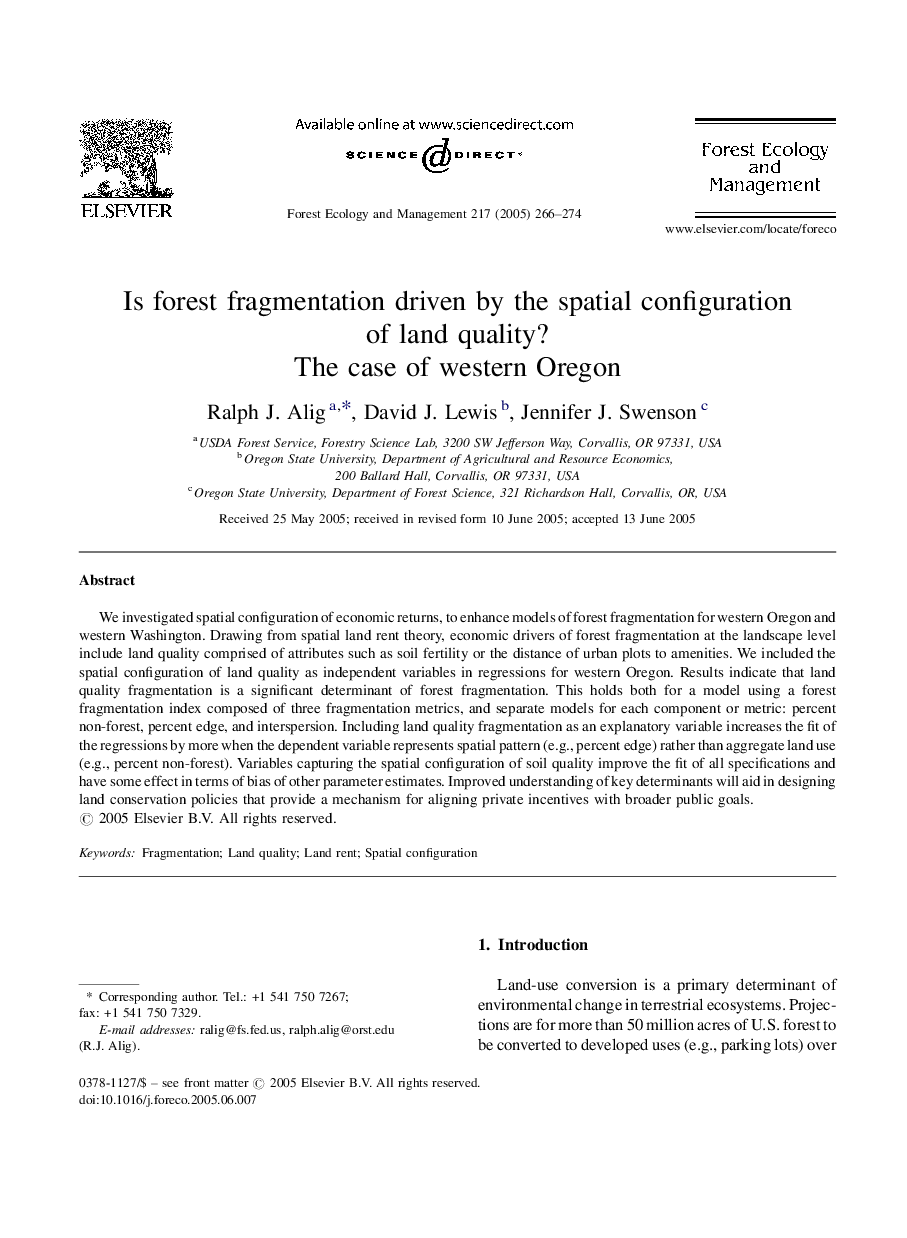| Article ID | Journal | Published Year | Pages | File Type |
|---|---|---|---|---|
| 9620154 | Forest Ecology and Management | 2005 | 9 Pages |
Abstract
We investigated spatial configuration of economic returns, to enhance models of forest fragmentation for western Oregon and western Washington. Drawing from spatial land rent theory, economic drivers of forest fragmentation at the landscape level include land quality comprised of attributes such as soil fertility or the distance of urban plots to amenities. We included the spatial configuration of land quality as independent variables in regressions for western Oregon. Results indicate that land quality fragmentation is a significant determinant of forest fragmentation. This holds both for a model using a forest fragmentation index composed of three fragmentation metrics, and separate models for each component or metric: percent non-forest, percent edge, and interspersion. Including land quality fragmentation as an explanatory variable increases the fit of the regressions by more when the dependent variable represents spatial pattern (e.g., percent edge) rather than aggregate land use (e.g., percent non-forest). Variables capturing the spatial configuration of soil quality improve the fit of all specifications and have some effect in terms of bias of other parameter estimates. Improved understanding of key determinants will aid in designing land conservation policies that provide a mechanism for aligning private incentives with broader public goals.
Related Topics
Life Sciences
Agricultural and Biological Sciences
Ecology, Evolution, Behavior and Systematics
Authors
Ralph J. Alig, David J. Lewis, Jennifer J. Swenson,
